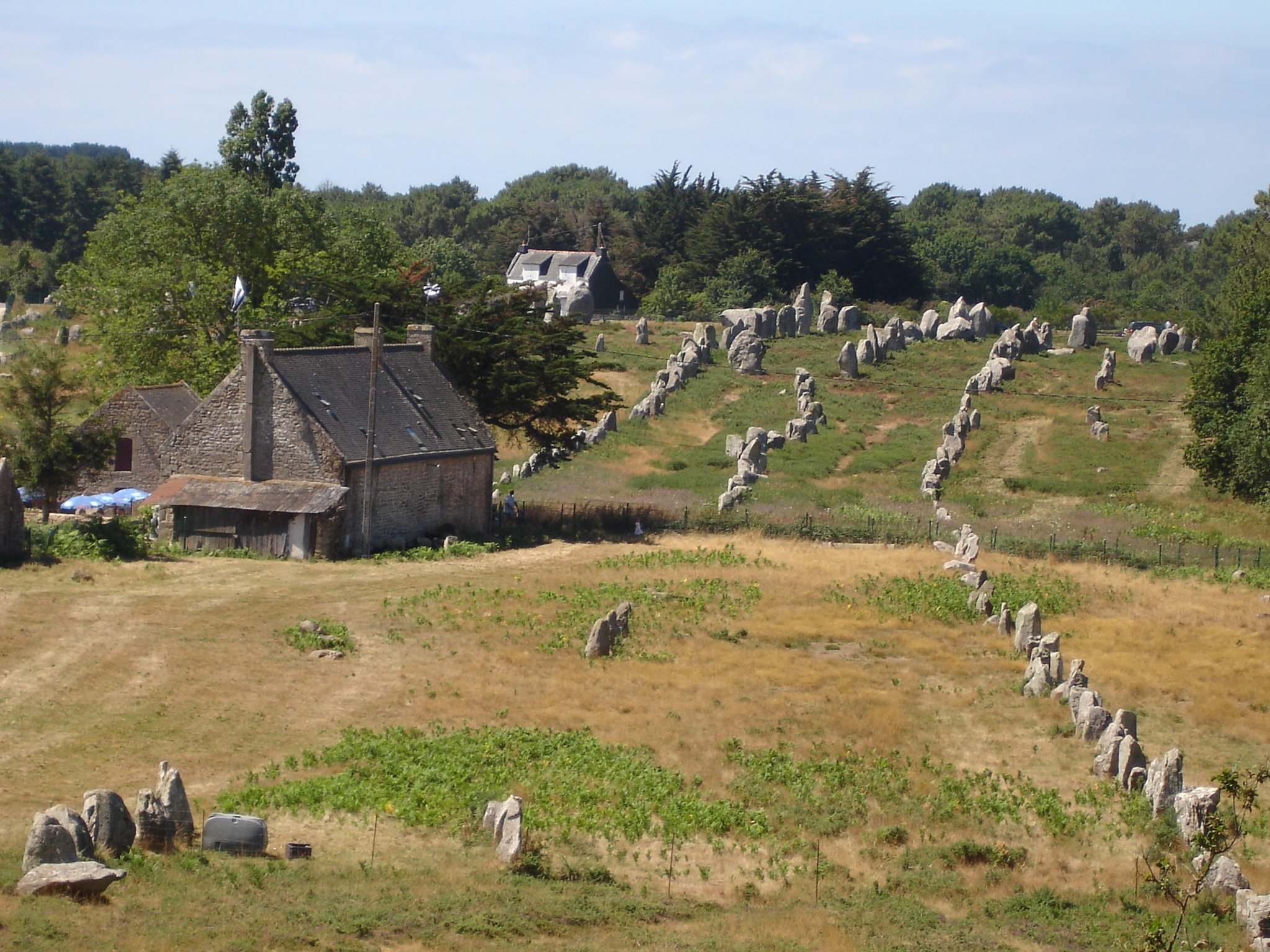Carnac
Carnac ( Breton Karnag ) is a commune on the Atlantic coast with 4227 inhabitants (as of 1 January 2011) in the department of Morbihan in the Brittany region. It is famous for its more than 3,000 menhirs, stone rows to the (French alignments) are grouped. The stone enclosure of Brittany and several megalithic tombs ( dolmens ) are close to the place.
Tourism
The climatically stable south coast of Brittany with its many coves and sandy beaches is popular with French since the 1920s. Since the 1960s, visitors from other European countries find one, visit the many prehistoric sites in Carnac and its surroundings.
Monuments
The stone rows, the solitary menhirs and dolmens, consist essentially of the granitic rocks of the open-minded from the sea coast. Many surfaces are today partly weathered and covered with lichens. While the older stones of the stone rows and the dolmens were handled carefully as a rule, machining marks are in later stone circles hardly determine.
Stone rows
The stone rows form the groups of Kerlescan, Le Menec and Kermario. The rows are about three kilometers long, and originally contained more than 3,000 jewels, which are between 0.5 and 4.0 m high. The largest stones are always located at the western end. The original scale was probably 8 km, and the system also included the monuments of Le Petit Menec, St. Barbe and Kerzerho. The series thus ranged from Crac'h Ria to Plouharnel.
- Menec has stone circles at both ends (90 and 110 m in diameter ). The stone row changes once the alignment, which some researchers view as indicating a construction in two phases.
- In Kermario the remains of the stone circle can be seen on aerial photographs at the West - end yet. The stone row changes its direction three times.
- Kerlescan has a stone circle at the west end, the east apparently not. It consists of 13 parallel lines, which contain from seven to 41 blocks. Some of the megaliths was already available as blocks, many of the smaller ones were broken out of the bedrock.
Tumulus of St. Michel
The Tumulus of St. Michel is the largest artificial mound built in France ( length 125 m, width 60 m, height 10 m ). It contains a number of stone cists and dolmens, which could be viewed by means of tunnels. Since the hill bed was unstable by the excavation, the tunnel is now closed to the public. On top of the hill there is a grave chapel for the Archangel Michael and a stone cross. From here you have a good view over the Gulf of Morbihan. Comparable Großtumuli in the area include the Le Petit Mont at Arzon and the facilities of Er Grah, Mane Mane- Lud, and he - Hroek at Locmariaquer.
Megalithic tombs
On the outskirts there are dolmens Kerluir and Beaumer. In the village there is another dolmen on the Rue de Courdiec. An outline of the current research to the megalithic tombs of the Carnac region was presented by the Berlin Society for Anthropology, Ethnology and Prehistory.
Prehistoric settlement
The Camp du Lizo is a hilltop settlement. It was built at the end of the Bronze Age and has been explored only one in the region. Situated on a plateau above the river Crac'h, northeast of Carnac Camp was examined 1923-1926 by Zacharie Le Rouzic.
Dating
The megaliths were (from about 4500 BC) built in the Neolithic and (about 2300 BC) in use until the Bronze Age. Usually dated to the stone rows in the Late Neolithic; However, the basis for a dating ( skeletal remains or pottery ) are sparse, and moreover, could also come from later times. The stone rows Kermario run through the Early Neolithic long mound of Le Manio.
Museum
In the former building of a seminary in the center of Carnac is the ' Musée de Prehistoire ' with interesting exhibits and information about the megalithic culture. Some cabinets are the Roman period and the Middle Ages without notice ( see web link).
Sons and daughters of the town
- Paul Goffeny (1907-1945), highly decorated French naval pilot
Twinning
- Illertissen, Germany
- La Clusaz, Haute- Savoie, France






